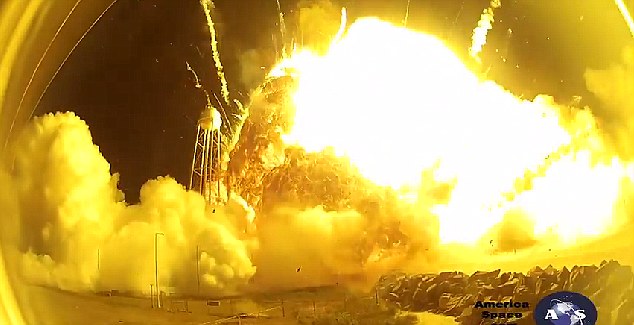On June 17, the Federal Aviation Administration (FAA) released its Final Environmental Impact Statement (EIS) recommending the issuance of a rocket launch site operator’s license to Camden County. The last step in the process is for the FAA to release a Record of Decision (ROD) expected sometime this month. The Center sent the following letter condemning fundamental flaws in the environmental review that the FAA should correct by conducting a Supplemental EIS before making a decision. You can read the entire EIS online at the FAA's website.

General Wayne Monteith, FAA Administrator
Associate Administrator FAA/AST
800 Independence Avenue SW
Washington, DC 20591
General Monteith:
I am writing to restate and expand upon concerns previously conveyed in our comments, and others, expressing well-justified alarm about glaring deficiencies in FAA’s review of Spaceport Camden.
For the sake of brevity, in these comments, I will limit remarks to four prominent areas of factual negligence and faulty assumptions related to the EIS that are both careless and misleading.
1. Launch trajectory and hypothetical rocket characteristics – According to the most qualified opinions available, the launch trajectory proposed is implausible if not impossible to deliver payload in achieving a viable orbital mission. It appears that the manipulated launch-angle used in the EIS, and consequentially applied in the state’s consistency review, was improperly assumed for the convenience of attempting to reduce the hazard-zone for a launch failure during the initial stages immediately after launch. The misguided nature of this proposal is revealed by the absence of any precedent for small rockets using such an angle of trajectory to support the attainment of an orbital mission. Please clarify if and when such a small-rocket orbital launch has ever been done successfully, or if the notion is just theoretical conjecture.
Regarding the small size of the hypothetical rocket, why does the EIS describe storage at the site for what amounts to some 28 years of small-rocket fuel supply? This strongly suggests the hidden intention to transition to the use of larger rockets that require far more fuel, once licensing is obtained for a site approved based on a fantasized small rocket allegedly having smaller risks.
2. Not all prospective damages can be compensated by insurance – With FAA’s consent and corroboration, Georgia DNR has granted “federal consistency certification” to Spaceport Camden under the state’s coastal management program [authorized by NOAA, and thus implicating yet another federal agency’s negligence], on the basis of requiring mandatory insurance for damages which are both [a] unknown due to the above-mentioned hypothetical nature of the proposed activities and [b] simply cannot be monetized due to the losses at stake. Priceless resources in harm’s way of Spaceport Camden include rare, uniquely pristine maritime forest, much of it designated wilderness area, at Cumberland Island National Seashore. Although “acts of God” are anticipated in managing such natural areas, non-essential and highly speculative rocket launches – which could impose man-made disasters – are not. Moreover, FAA has utterly no experience in evaluating, preventing, or even partially mitigating such disastrous damages because the agency has never encountered such risks in any other licensing evaluation. It is worth noting that small-rocket launch accidents (usually catastrophic) are 68,000 times more likely than an airline accident, and given the trajectory proposed, in the event of a mid-launch failure, one hundred percent of debris will fall in coastal Georgia. None of these vitally important considerations have been acknowledged or properly addressed in FAA’s EIS.
3. Conflating human fatality with environmental damages – Throughout the proposal’s assessment by both FAA and Georgia DNR, it has been assumed that risk to human life is an accurate and reliable proxy for predicting and preventing threats to the environment. Yet there is no attempt to substantiate why such a conflation is justifiable. Considering the disastrous consequences possible at the Cumberland Island National Seashore, even a completely evacuated area could incur massive damages when not a single human is present.
Evidently, the reason for the convenient but inexplicable and unjustifiable substitution of one sort of risk for the other is because FAA has utterly no experience in – or competency in evaluating – the critically important distinctions between the two. This is doubly disturbing when considering another woefully deficient aspect of the FAA review, namely multiple hazardous-waste sites near the launch area. Yet only one of these sites is even acknowledged in the EIS, and seismic testing appears to have caused the release of arsenic from one of the unevaluated sites, which has not been acknowledged by FAA or Georgia DNR, much less further evaluated by these agencies. Release of disposed of hazardous materials caused by rocket launches would likely impose no immediate fatalities, but by contaminating groundwater and fisheries, such impacts could potentially combine significant and unacceptable cumulative damages in jeopardizing both human health and the environment. Has FAA considered such dire collateral damages to the public?
4. Failure to meet NEPA requirement for purpose and need of the project – FAA’s generic language describing the project’s need and purpose has been used to support licensing decisions that ostensibly expand spaceport capacity, but without any accountability regarding the incremental and cumulative waste of resources caused by not employing a more strategic approach. The resulting unjustified waste is especially conspicuous in FAA’s review of Spaceport Camden. For instance, even when there is no launch failure, the costs of limiting hazards of spaceport operations will be substantial, and yet they remain largely unexamined. Such costs are not incurred in reducing hazards at other spaceports that have no areas at risk, which seems to at least partially explain FAA’s superficial analysis of the consequences of having to evacuate both land-based areas and waterways when launches would be scheduled at Spaceport Camden. The cumulative expenses of these essential functions are surely in the tens of thousands if not hundreds-of- thousands-of-dollars for every launch – and when launch-delay events occur. Who will incur these costs – including parties not involved in launches – and how exactly will they be paid for?
It is also noteworthy that impacts of launch safety-procedures in impeding commercial activities of existing businesses are not evaluated. The consequences of all such costs for the competitive standing of a rocket-launching operation using Spaceport Camden are not addressed, nor is there any evaluation of the specific need for this facility. These analytical omissions are especially pertinent considering the number of licensed U.S. spaceport sites that remain dormant, having never been used years after being permitted. As a general concern, FAA’s review of this project indicates a disturbing lack of any national spaceport planning strategy. Such a national strategy would surely prevent costly, avoidable, and futile efforts in developing and evaluating projects that fail to comply with the rational use of public and private resources deemed justified in serving the anticipated needs of America’s spaceport industry.
The only remedy for lawfully resolving the considerable deficiencies in the Final EIS for Spaceport Camden is for FAA to prepare a thorough and factual Supplemental EIS. Unless this is done, costly and counterproductive litigation over these matters is inevitable.
Please respond with specific answers to the various issues and questions I have raised prior to taking any further steps to license Spaceport Camden.
Respectfully,
David C. Kyler, Co-Director
Center for a Sustainable Coast
cc: Senator Jon Ossoff
Senator Rafael Warnock
Deb Haaland, Secretary of Interior
Ricard W. Spinrad, NOAA Administrator

